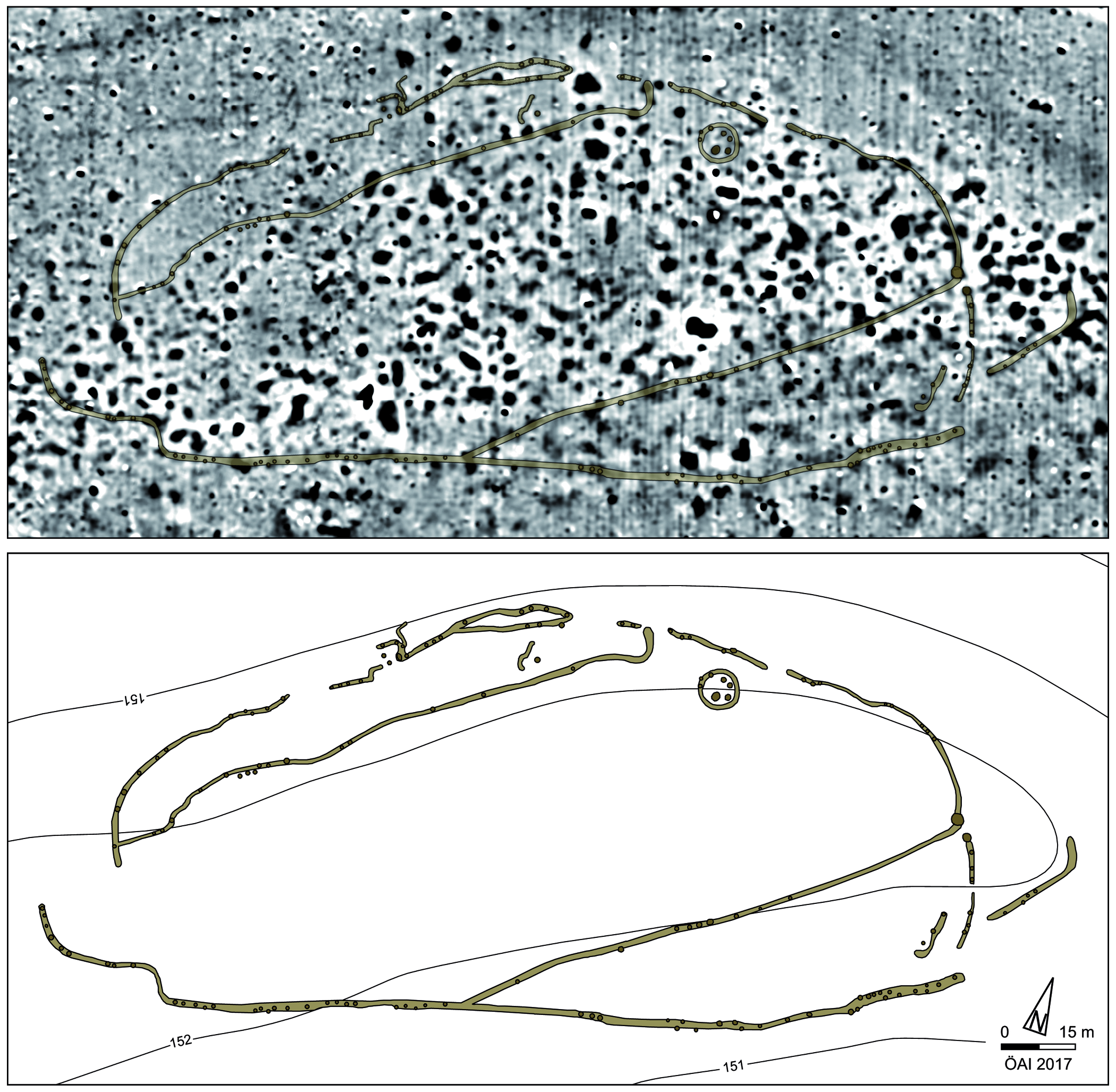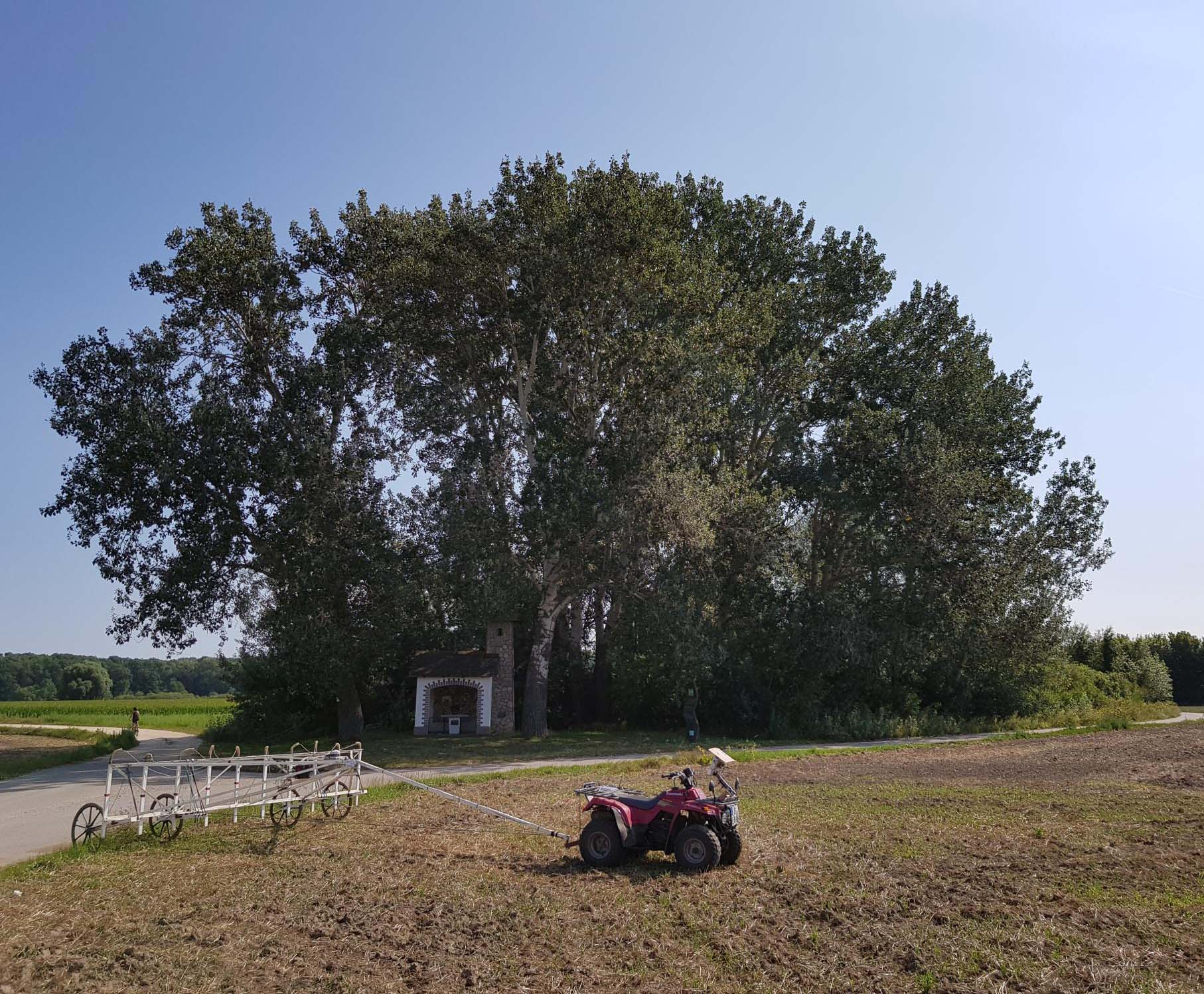Amber Road north of the Danube
To the north of the Danube research along the river Morava is focused on temporary Roman encampments and the polycultural central site of Drösing.
Drösing – central site along the Morava
Extensive geophysical multi-sensor surveys that were conducted over 140 ha in the municipalities of Drösing and Ringelsdorf led to the discovery of a late La Tène period oppidum on the Zajia mountain, a hill-like elevation at the edge of the Morava floodplain. The area is surrounded by embankments and measures 744.1 x 440.4 m (25 ha) in its entirety and therefore belongs to the group of around 40 known small oppida with measurements between 20 and 30 ha.
Roman Reuse of the late La Tène period oppidum of Drösing
An observation interesting for the research question regarding the Roman military presence north of the Danube is that the Roman reuse of the stronghold can be dated to the early Roman period. In particular the ramparts consisting of obstacles in the form of pointed stakes (pila muralia), a typical characteristic of Roman military architecture, and the many phases of the wooden gate construction are clearly visible in the measurement patterns through numerous post holes. A titulus in the area of a gate breaching the inner ditch also indicates a Roman adaptation. Two thirds of all the early Roman surface finds come from the area of the ramparts, including armor hooks, armor buckles, short sword as well as proof of Aucissa variants and fibulae Riha 5.7 as well as numerous fibulae of the type Almgren 68. Outside of the iron age encampment an oval palisade enclosure measuring 170.4 x 80.8 m with clavicula gates on the edge of the Morava floodplain was documented, which was possibly also used in the early Roman period. An As of Augustus with countermark IMP, AUC was also found there.

Roman encampment along the Morava south of Drösing
Aerial photographic documentation of encampment structures are currently being studied through large scale geophysical surveys along the Morava south of Drösing. At the sites Baumgarten on the Morava and Marchegg Roman finds were discovered that are the result of Roman military presence during the mid-Imperial period and in particular at the time of the Marcomannic Wars. The analysis of these find sites is taking into account the research results from along the Slovak part of the Morava and working in close collaboration with Kristian Elschek from the Institute of Archaeology of the Slovak Academy of Sciences.
Principal Investigator
Cooperations
- Landesmuseum Oberösterreich
- Institute for Mediterranean Heritage of the Znanstveno-raziskovalno središče Koper Univerze na Primorskem
Duration
since 2009
Funding
- OeAW-OeAI
- Cultural Department of the Province of Upper Austria
